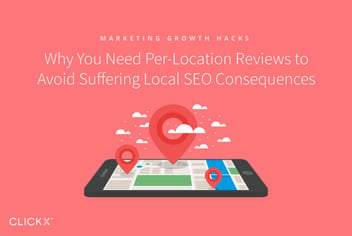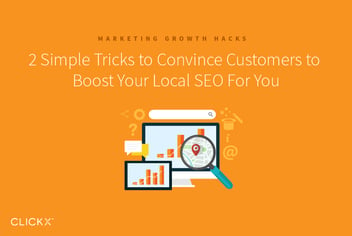3 Tips to Optimize Your Store Locator and Maximize In-Store Conversions
With the increase in the number of products and services being made available online, brick and mortar stores have it a bit tougher these days. In order to convince customers to actually come into their store to make a purchase, business owners need to be incredibly accommodating online. In particular, you need to make finding store information as easy as possible.
Featuring a store locator on your site helps customers quickly find the information they’re looking for, such as the nearest store, hours of operation, items in stock, and more. However, not all store locators are created equal and there are several factors you should consider when optimizing yours.
In this post we’ll reveal three tips to help you ensure your store locator is driving maximum in-store conversions. Let’s get started!

Key Takeaways:
- A mobile-friendly store locator can help you attract shoppers on-the-go.
- Automatic location detection can improve the user experience and provide you with marketing opportunities.
- Filter features can provide your customer with store-specific information so they’re less likely to be disappointed.
Tip 1: Create a Mobile Friendly Locator
The number of individuals using a mobile device to search for local businesses is on the rise. If you’re a company looking to attract shoppers who are already out and about, you need to create a mobile-friendly store locator, on your website. The locator below comes from the Target mobile website. Its simple design and large button make it easy for users of a smaller device to enter their location and find a store near them.

A mobile-friendly locator should be easy to use on all kinds of devices by adjusting to fit different size screens and always displaying the relevant elements. Ideally, it should also require minimal scrolling while in use. If your store locator is difficult or awkward to use, this could lead to a frustrated user, an overall poor user experience, a higher bounce rate, and fewer conversions.
When creating a store locator to use on your website, ensure the tool you use offers mobile-friendly services. Once your store locator is installed, check that it adjusts to the size of a variety of different devices.
Tip 2: Use Automatic Location Detection
Location detection services pick up a user’s location through an IP address or GPS, so they don’t even need to manually enter their location to find the nearest store. The Starbucks store locator automatically detects your location and shows you the location of the nearest store. It makes things even easier by telling you how far away each store is, and when they close.
.webp?width=1280&height=710&name=download%20(2).webp)
The main benefit of this feature is that is saves time for your user, making them more likely to follow through with the search and eventually come into your store. Moreover, knowing your customer’s location also allows you to provide them with location-specific marketing or information.
Popular tools that offer location detection and autocomplete features include Mapply and Bullseye. In order to use location detection, your visitor will need to give your website approval to do so. Once you’ve have access to the device’s IP or GPS, you can provide them with the details they need.
Tip 3: Feature Filters When Appropriate
If each of your locations do not provide the same products or services, a filter might be an appropriate addition to your store locator. Filters allow your user to select specific services, departments, or other store features as part of their search. This store locator from ACE Hardware clearly depicts the number of filter options you can include in your store locator:

Not every company will need to have filters for their store locator. However, if you’re frequently getting visitors coming to a location that doesn’t offer the service they’re looking for, including a filter in your store locator might be a good idea. Not only does it minimize frustration for the customer, but it should also boost conversions. You’re more likely to be able to provide the customer with what they need on their first store visit, and can reduce the chance that they’ll get frustrated and head to a competitor.
[Tweet “Including a filter online can save both you and your customer a major headache.”]
If your stores offer a different range of products, services, or departments, take a moment to make a comprehensive list. Then, you’ll need to classify each store in regards to whether or not they offer each one. This will make the filtering process easier for you to begin.
Bonus Tip: Showcase Offers and Add Call-to-Actions
Another way to drive people into your store is to showcase offers and add calls-to-action (CTAs). This is especially relevant if you offer both online and in-store purchases. There are various ways this can play out, but one example is to add a CTA button that encourages users to see if a product is available in a nearby store. In the below example from Best Buy, users can filter product searches by what’s available for pickup today. Within this they can set their local store through the store locator, which is accessible via the Change button in the Store Pickup section at the bottom.

By showcasing offers and adding CTAs you can save your customer time and money, and thus improve your overall relationship with them. For example, if they’re able to stop into a nearby store to pick up the product without needing to pay shipping costs, they’ll likely remember the ease of purchasing from you the next time they’re ready to buy. Additionally, by enticing customers to come to your store, you’ll have the chance to persuade them to make additional purchases.
As mentioned, there are a variety of ways this can be executed. Some ways to showcase offers and add CTAs are to add buttons to product pages, utilize popups, or post flyers. Customers can then be directed to the store locator, for example by using a Find a store near you button. This in turn will lead them to the appropriate store where they’ll hopefully make their purchase.
Conclusion
With the ease of online shopping, it can be difficult to get people to actually pay a visit to your physical store. However, if you make it as straightforward as possible for customers to find what they’re looking for, you’ll have more visitors who are ready to make a purchase.
Using a store locator that is optimized with some of the feature we’ve discussed can help improve your in-store conversions. Let’s recap the four ways you can improve your website’s store locator for a better user experience:
- Ensure your store search is mobile friendly.
- Save time for your customers with a location detection feature.
- Provide filters if your stores’ offerings vary.
- Showcase offers and add call-to-actions that direct people to your store locator.
Which feature do you think is the most important for a website store locator? Let us know in the comments section below!




